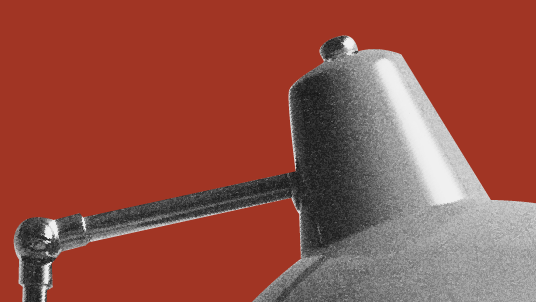Icebreaker Activities
Whether for a small group or a large team, the Icebreaker Activities Play can help you make personal connections and spark the kind of creative thinking that moves work forward.

PREP TIME
15m
Run TIME
30m
Persons
3-100
5-second summary
- Choose the appropriate icebreaker.
- Create breakout groups.
- Break the ice with questions and/or games.
WHAT YOU WILL NEED
- Video conferencing with screen sharing or meeting space.
- Digital collaboration tool.
- Optional: physical whiteboard, markers, and index cards.
PLAY resources
How to run an icebreaker at work
Make personal connections and spark the kind of creative thinking that moves work forward.
什么是破冰活动?
破冰活动是一种有趣的互动练习,旨在帮助人们在社交或职业环境中相互了解。破冰活动通常在会议、研讨会或群组活动开始时使用,以促进沟通、建立融洽的关系和营造轻松的氛围。这些活动可以是简单的自我介绍,也可以是鼓励团队合作和互动的更具吸引力的游戏。
为什么要开展破冰活动游戏?
研究表明,那些努力相互交流(谈论工作以外的任何事情)的团队更有效率,也更感到满意。
Atlassian 的团队合作实验室为连接团队进行了类似的实验,结果也发现,这样做能激发快乐 (97%) 和联系 (87%)。
破冰活动的 5 个好处
- 心理安全:破冰活动有助于营造一个不做评价的环境,让团队成员能够自在地分享想法和表达自己,而不必担心受到批评或拒绝。
- 团队凝聚力:通过鼓励协作和个人互动,破冰活动可以加强团队成员之间的联系,增进信任和团结意识。
- 员工满意度:参与有趣的互动式破冰活动可以鼓舞士气,让工作场所更加令人愉快,从而提高员工满意度。
- 团队效率:破冰活动可以加强沟通、信任和协作,从而提高团队合作效率,增强解决问题的能力。
- 创造性思维:这些活动能刺激大脑,鼓励打破常规思维,帮助团队成员用新颖、创新的想法解决问题。
1. Choose the appropriate icebreaker
1. 为剧本做准备 5 分钟
根据群组人数、地点和预期结果,有许多破冰活动值得考虑。例如,彼此熟悉的团队可能更愿意通过破冰游戏分享个人信息。较新的团队可能希望从风险较低的问题开始,这些问题侧重于工作特定的主题。筛选出最适合您群组的破冰活动类型。
- 问题:开始对话并鼓励讨论。非常适合较小的群组。
- 游戏:营造社区感,打破社交障碍。在规模较大或比较成熟的群组中,游戏尤其有效。
2. Prep the Play
1. 为剧本做准备 5 分钟
对于面对面的团队,请根据破冰活动的类型来准备会议室。这可能包括白板、索引卡片、便利贴和/或记号笔。对于远程团队,您也可以根据破冰活动准备虚拟会议室,例如 Confluence 页面等协作文档。
3. Create breakout groups
1. 为剧本做准备 5 分钟
如果人数超过 10 人,可以考虑分成若干群组,以促进沟通并提高参与度。群组可以在破冰活动前决定,也可以随机决定。
研究人员还发现,这些规模较小的分组可以帮助人口结构多样化的成组员工增加他们随后的在线沟通。
4. Choose your icebreaker questions
1. 为剧本做准备 5 分钟
从快速提示性问题到深入探讨的目的性问题,这些破冰问题将有助于启动对话。
掷骰子
使用 Atlassian 的破冰骰子剪贴图来回答问题。
了解同事
1. 我从来没有________________。
2. 我的朋友因为我的________________而喜欢我。
3. 如果我的宠物能说话,它会说________________。
4. 一个____________比十个________________好。
有目的的问题
1. 您自传的标题会是什么?
- 主题:总结复杂的事件或概念。
-
目的:为起草愿景声明等活动做准备。
2. 如果您是一个超级英雄,您会怎么称呼自己?
- 主题:给东西取名字很难!
-
目的:练习用一个单词或短语概括大量信息。这是营销团队的破冰杀手锏!
3. 谁是您的第一位导师,哪些素质使他们成为一个好(或糟糕)的导师?
- 主题:团队合作和支持很重要。
-
目的:强化“相互依赖是成长的一部分”的理念。对于具有大量依赖关系的项目或团队,以及在领导层会议期间,使用此破冰问题。
4. 您曾致电客户服务部门投诉过吗?发生了什么情况?
- 主题:与客户感同身受。
-
目的:在讨论权衡利弊或设计新的用户体验之前,让每个人都进入一种感同身受的状态。
5. 您从出错的项目中学到了什么?
- 主题:失败是学习的机会
-
目的:专注于风险识别和缓解。
趣味问题
1. 您会选择成为什么动物?为什么?
2. 您记得的最后一个梦是什么吗?
3. 如何让队友知道您处于深度工作模式?
4. 如果钱不是问题,您会在哪里度假?
5. 您最喜欢的书籍、杂志或播客是什么?
6. 您是用什么车学习开车的?
7. 今天让您心怀感激的一件事是什么?
8. 当您读书或看电视时,您是选择小说还是非小说?
9. 您喜欢咖啡、茶还是苏打水?
10. 您还记得让您微笑的保险杠贴纸吗?
这里有 140 多个破冰问题想法。
5. Icebreaker games
1. 为剧本做准备 5 分钟
使用这些有趣的破冰游戏,让您在会议、场外活动等场合放松身心,投入其中。
驱除恶魔 10 分钟
在进行头脑风暴或解决问题之前,激活您的神经通路,开怀大笑几声。最适合三人或以上的群组。
1. 介绍要进行头脑风暴的主题,或要尝试解决的问题。
2. 请群组成员用白板或牛皮纸写下自己最糟糕的想法,对于远程团队,也可以使用数字协作工具。
3. 几分钟后,退后一步,看看全部的想法(我们保证您不会笑倒在地!)。
4.(可选)请每个人分享他们最喜欢的最糟糕的想法,以及为什么这个想法让他们印象深刻。
这项练习有助于团队在真正开始解决问题时抵制自我审查的诱惑(往往很强)。在听取了最糟糕的想法并将其从系统中清除后,您就可以继续按计划进行头脑风暴了。
神秘人物群组排序 15-20 分钟
启动创造性思维,体验不同的思维过程。最适合 20 人或以上的大型群组。
1. 每个人在索引卡上写一个关于自己的惊人事实,然后把他们的卡片丢进袋子、盒子或帽子里。
2. 每个人从袋子中随机选择一张卡片。
3. 现在好戏开始了。参与者站起来,互相交流,目的是找到符合主题或类型相似的卡片。在思考卡片之间的共同点时,请保持开放的心态。共同点可以是冒险倾向、起源故事、音乐或其他任何东西。每个分组的大小没有限制,但是您必须找到能容纳所有卡片的分组—没有人会被遗漏。
4. 每个群组阅读他们的卡片并分享他们确定的主题。
5.(可选)请大家站起来给自己重新排序。有些分组可能会保持不变,而另一些分组可能将大不相同。
请注意,练习的重点不在于弄清楚哪个事实与哪个人有关,而在于目的。实际上,记得在练习开始时让参与者知道这一点,以免产生任何焦虑。
电话猜谜 15 分钟
通过这项非言语活动为一天的聆听热身。最适合 10 人或以上的群组。
1. 分成五至八人的团队。
2. 让一个团队来到房间前面,站成一排,一前一后,面向同一个方向(重要的是,没有人能看到站在自己后面的人)。
3. 给后面的人看一个词,让他们默默地做出动作,但暂时不要这样做。同时还要把这个词展示给观众,让他们知道发生了什么,但要确保队伍中没有其他人看到。
4. 当排在队伍后面的人准备好时,拍拍站在他前面的人的肩膀。那个人转过身来,面对知道这个词的人。
5. 然后,这个人尽全力用动作来比划这个词两三次,以便观看的人可以真正吸收并记住这些动作。不要让任何人说出要用动作比划的这个词!
6. 然后,让看的人变成比划动作的人—他们轻拍前面的人,尽全力重复这些动作。(您明白这是怎么回事了,对吧?)
7. 重复第四至第六步,直到队伍中的每个人都看过比划的动作。
8. 当比划的动作与最初的动作发生了戏剧性的变化时,大家都会笑起来。
9. 排在队伍前面的人试着猜出原词。如果猜对了,则该队得一分。至于要严格到什么程度,就看您的了!
确保每个团队都有机会做一做。您可以根据自己的喜好继续下去。以下是您的团队可以表演的词语示例:美人鱼、草坪洒水器、消防员、咕噜、灯泡、雪铲、摩托艇、冲浪者、对讲机或煎锅。
三件东西 5-10 分钟
在头脑风暴会议之前,使用这种快节奏的活动来激发快速、不加筛选的思考。最适合五人或以上的群组。
1. 围成一圈,选择一个人来开始游戏—我们称他为 A 人。
2. A 人转向旁边的 B 人,说出一个类别,比如“三明治的种类”。
3. B 人尽可能快地说出符合该类别的三样东西。没有评判,也没有自我审查!
4. 说完后,全组拍手喊出:“三样东西!”
5. 绕圈进行,直到每个人都有机会说出一个类别和三样东西。
关键不是要确保所有被指定的东西都完全符合这个类别,也不是想出最滑稽的回应,关键在于开怀大笑和玩得开心。同时让大脑放松一下,这样神经元就能快速反应。即使是最奇怪的发言,也要庆贺一番,定下随心所欲的基调,然后再开始更聪明、更具战略性的活动。
Follow-up
通过每周一次的“首席氛围官”活动,保持联系畅通。Atlassian 团队尝试了这一例行程序,调查结果显示,97% 的参与者认为 CVO 例行程序激发了快乐,87% 的人表示它增强了与队友的联系。

还有问题?
与其他 Atlassian 使用手册用户开始对话、获取支持或提供反馈。
Other plays you may like
会议
每周团队更新
分享进展情况—无需再安排会议。
会议
页面主导型会议
更好的会议首先要有一页纸,概述会议目的、预期成果和关键讨论要点。
沟通
用户手册
帮助您的队友了解如何最好地与您合作。
汇报
回顾
提供一个安全的空间来讨论哪些有效,哪些无效。
了解最新信息
注册我们的时事通讯,获取最新的演练和 工作生活建议。



